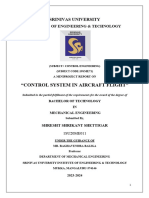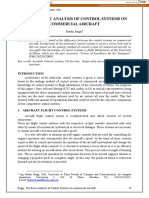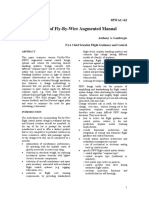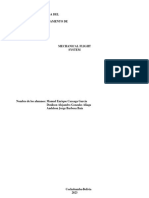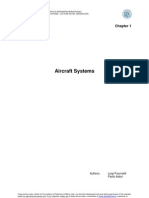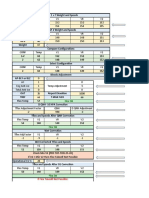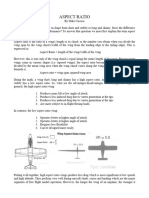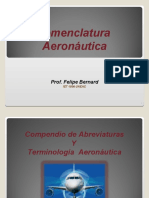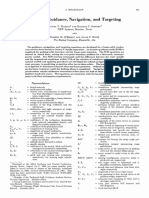0% found this document useful (0 votes)
27 views22 pagesApplied Mechatronics in Flight Control Systems
This case study report by Kaajal Kataria explores the evolution and components of flight control systems, detailing advancements from early mechanical systems to modern Fly-By-Wire and future plasma actuation technologies. It outlines the primary and secondary flight controls, their functions, and the significance of mechatronics in enhancing aircraft maneuverability and safety. The report emphasizes the historical context of flight control systems and discusses potential future developments in aviation technology.
Uploaded by
sajithkvs55555Copyright
© © All Rights Reserved
We take content rights seriously. If you suspect this is your content, claim it here.
Available Formats
Download as PDF, TXT or read online on Scribd
0% found this document useful (0 votes)
27 views22 pagesApplied Mechatronics in Flight Control Systems
This case study report by Kaajal Kataria explores the evolution and components of flight control systems, detailing advancements from early mechanical systems to modern Fly-By-Wire and future plasma actuation technologies. It outlines the primary and secondary flight controls, their functions, and the significance of mechatronics in enhancing aircraft maneuverability and safety. The report emphasizes the historical context of flight control systems and discusses potential future developments in aviation technology.
Uploaded by
sajithkvs55555Copyright
© © All Rights Reserved
We take content rights seriously. If you suspect this is your content, claim it here.
Available Formats
Download as PDF, TXT or read online on Scribd
/ 22






